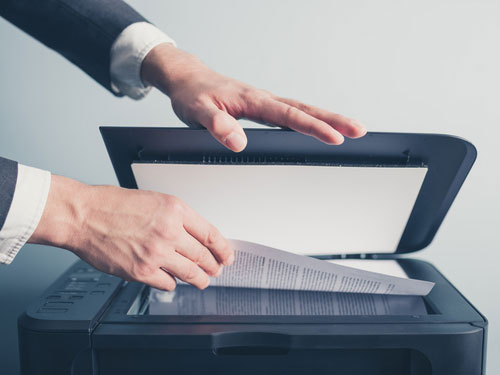What is the impact of paper consumption at the office? How can paper consumption be reduced? We spend around 1/3 of our life working, therefore, it’s important to bear in mind the impact that businesses have on the environment and on society. Let’s find out some simple habits your company might adopt to better manage its paper consumption.
Office Paper Consumption Around The World
Paper is an arrangement of plant fibers laid down as a flat sheet. It’s made from a suspension of plant tissues (pulp) in water that comes mostly from wood, but also from recycled paper and other plant sources such as hemp or bamboo. Paper has many different uses and we used it many times throughout the day maybe without thinking about its impact. From tissues, napkins, toilet paper, books, and notebooks, to magazines or banknotes, it’s easy to find a paper in our daily routines. And let’s not forget about paperboard that has many uses for the packaging industry and depends on the supply of paper too.
In 2016, around 411 million tons of paper and cardboard were produced. Of these, more than 50% was owed to packaging paper and nearly one third was attributed to photography papers. China and the U.S. are among the main producers of paper – but they’re also the top consumers with, respectively, 106 and 71 million metric tons of paper and paperboard consumed annually. In fact, in a time where digitalization and technology are taking over the world and changing the way we live, paper and paperboard production was 28,3 million tonnes higher in 2016 than in 2000. So you might ask yourself – what’s wrong with these numbers?
What Is The Impact Of Paper Consumption In Business?
Environmental Impact Of Paper Consumption

In order to make paper we need wood, right? That’s exactly where the problem stands – to make a lot of paper we need a lot of wood – and wood meaning taking down trees (when making brand new, not recycled paper). And despite the fact that for the paper industry most of the trees that are taken down are planted afterward, growing them again still needs water and nutrients. In fact, the pulp and paper industry uses over 40% of all industrial wood traded globally to make products such as office paper, tissues and paper-based packaging.
The process of making paper also consumes lots of water per se – specifically, between 2 and 13 liters of water are needed to make an A4 sheet. At the same time, manufacturing pulp and paper from pulping and bleaching processes has big environmental consequences in the water and soils.
- Related:
The Financial Impact Of Paper Consumption
Besides the consequences that paper has on the environment, it also has a significant impact on companies’ finances. Some studies show that an average worker uses 10,000 sheets of paper per year and others estimate that the average American office worker uses a sheet of paper every 12 minutes. While the paper itself may not be expensive, other costs – like printing, signing, copying, archiving and finding the right dossier – are. And they don’t only cost money, they are time-consuming too.
It is estimated that a company with a 100 employees spends from €10.000 up to €25.000 euros each year only for its internal consumption of paper and the maintenance of equipment. In total the unnecessary impressions (forgotten, thrown away, lost) would represent a cost of 300 million euros according to an estimate made by the National Union of Image and Information Media.
How To Reduce Paper Consumption At The Office?
We have identified 3 main areas to work from in order to move from theory to practice and start 2019 empowering companies to reduce their paper consumption. We’ll start with changing printing habits and then go over choosing sustainable paper suppliers and recycling.
1 – Change Staff’s Printing Habits To Reduce Paper Consumption In The Office

Think twice if you need that paper before you print. It’s too easy to push the print button and print out single line e-mails or unnecessary documents that we’ll storage or through away after giving a quick look. Why not give a quick look on a digital screen only? Or use group e-mail lists to communicate important messages efficiently? Or even adopt electronic signatures across the company so that there’s no need to print just for signing? And if the question is storage, why not use electronic archive software? Or using electronic data technologies to make sage credit card transfers without the need of printing invoices or transaction records?
Step 2, after consciously choosing to go for a print, is to use paper more efficiently – and select the “duplex” option on the printing menu would be great to start with. This means copying images or text onto both sides of a paper sheet and represents 50% savings in paper sheets. Considering the paper thickness is also a great idea that impacts both costs and the amount of paper used – choose lighter (around 60g/m2) sheets that use fewer fibers. As well, encouraging the staff to reuse one-side printed papers as drafts or using them to write down memos are good ways to make paper last longer.
Remember, all small gestures help to fight paper consumption. If you’re really up to changing your organization habits, take a look a WWF’s paper reduction complete guide.
2 – Find Sustainably Sourced Paper And Sponsor Responsible Producers
Companies may become more aware and highly decrease the amount of paper they use – but they’ll still use it. Therefore, it’s important to choose paper sustainably sourced, i.e., made from wood that comes from certified and traceable forests. And how can we know this? They are labeled with FSC or PEFC acronyms! And what’s wrong if we buy papers that don’t have these labels? Well, it means that there’s no guarantee that the wood used to make it didn’t come from illegal or controversial sources – and forests, wildlife, and local communities might have been harmed in the process.
Be careful as well if you see a paper with an ECF acronym, as there’s no guarantee that it was produced using bleaching processes that don’t generate harmful waste – and excessive quantities of chlorine (a polluting chemical) might have been used. To better understand these different labels, you can consult the practical guide developed by Ecolabel.
3 – Recycle And End The Paper’s Lifecycle Sustainably
Despite all the efforts that can and should be made, companies will always end up wasting paper up to some degree. In this case, the best way to proceed is to make sure these papers end up their lifecycle in the most sustainable way. This means making paper’s lifecycle circular and recycling it. Therefore, it’s important that the offices are equipped with sorting bins and that the staff is taught on what can or cannot be recycled. Making sure that the cleaning staff also knows the rules of the recycling game and that the town hall, producer company (if an extended producer responsibility law is applied) or other responsible entity are dealing properly with this waste is also crucial to make sure that the all the effort is worth it.
- Related:
Images credits to office paper on Shutterstock, paper deforestation on Shutterstock & paper printer on Shutterstock

